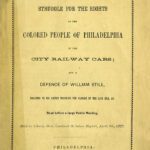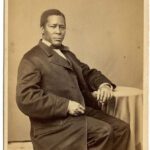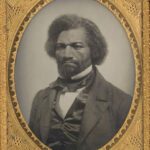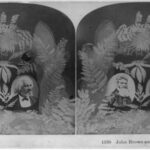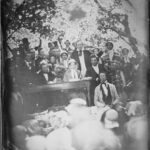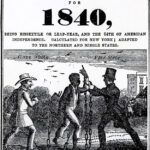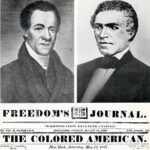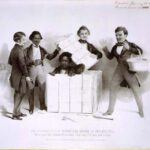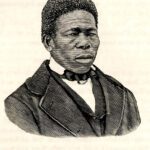This speech paints a picture of a life that was not easy. Sojourner Truth (formerly Isabella Baumfree) gave this speech in 1854. The speech was put in written form forty years later. Some historians debate whether the written copy is true to her original remarks. No matter how similar the two speeches may or may not be, Sojourner’s life was not easy. It was filled with hard labor and sadness.
Sojourner was enslaved at birth. When she was nine, she was taken from her family and sold to another enslaver. This was the first of many times she was sold to new enslavers. She was whipped and beaten for many reasons. One reason was that she did not know how to speak English well since she grew up in a Dutch area in New York and spoke Dutch until she was nine. She was also beaten to make her work faster and harder. Many enslaved people were mocked and yelled at daily. She would pray to find peace to get through hard times.
Sojourner fell in love with an enslaved man from another plantation. His enslaver followed him one night as he left to visit her. His enslaver beat him and dragged him back to the enslaver’s home. Sojourner’s enslaver forced her to marry a much older enslaver man as punishment. She had five children, and one child died very young. Sojourner was told she would be set free once New York passed a law to free all of the state’s enslaved. When it was time for her to be freed, her enslaver changed his mind. Sojourner decided it was time to escape. She was only able to take her infant daughter with her.
Sojourner left in the middle of the night and did not know where she was going. She prayed for help and soon found the home of two very kind people who offered to take her in. She stayed there until there was a state law to free slaves. She missed her other children and wanted to find them. Sojourner found that some of her children had been sold to different enslavers. With help from people who believed in freedom for the enslaved, she could go to court to get her son back. The court ruled in her favor, but only her youngest son was returned to her. He was badly beaten and scarred. Her heart ached for her children and how they were treated.
Sojourner soon became part of the Quaker religious groups. The people lived together in small towns and helped each other to run small mills and farms. They believed in peace, women’s rights, freedom for the enslaved, and freedom of religion. She met many people who believed in the same rights. One of these people was the famous man Frederick Douglass. Her belief in freedom soon caused her to travel to speak at places such as the Ohio Women’s Rights Convention. There, she gave her famous speech, “Ain’t I a Woman?”
During the Civil War, Sojourner did all she could to help the Union. She spoke about freedom for the enslaved. She called for black men to enlist in the Union Army. She wanted them to fight against the South to put an end to slavery. Sojourner worked with formerly enslaved men to help them get a new start in life. She also worked for the National Freedman’s Relief Association in Washington, D.C. She cared for the sick at the Freedman’s Hospital. She was even able to meet and speak with President Abraham Lincoln.
After the Civil War, Sojourner traveled and spoke about giving the formerly enslaved land in the West. Her grandson, who traveled with her, soon became ill and died. Frances Titus joined Sojourner as she traveled so she would not be alone. Sojourner kept traveling, hoping that her words would make a difference. It was many years before she saw any change. In 1879, many of the formerly enslaved started moving west and north. Sojourner spent time in the West trying to help those in need. She spoke in many churches, seeking more help building homes, finding jobs, and starting farms.
Sojourner had many illnesses as she traveled. She kept going because she knew her work was necessary. She did not want anyone to be treated as she was. She was taken from her family, and her children were taken from her. Sojourner had been beaten, lonely, hungry, and lost. She never had fancy clothes or a big house. What she did have was strength and a rich spirit. She wanted to see an end to slavery and harsh punishment. In July 1883, she became too sick to travel. She returned home to her daughters and died in November. She was eighty-six years old.
New Jersey Student Learning Standards
- 6.1.12.CivicsPI.3.a: Analyze primary and secondary sources to determine the extent to which local and state issues, publications, and the rise of interest groups and party politics impacted the development of democratic institutions and practices.
- 6.1.12.CivicsDP.3.c: Examine the origins of the antislavery movement and the impact of particular events, such as the Amistad decision, on the movement.
- 6.1.12.HistoryUP.3.b: Examine a variety of sources from multiple perspectives on slavery and evaluate the claims used to justify the arguments.
Curriculum
- 3 Sections
- 3 Lessons
- Lifetime
- Stage 11
- Stage 21
- Stage 31
